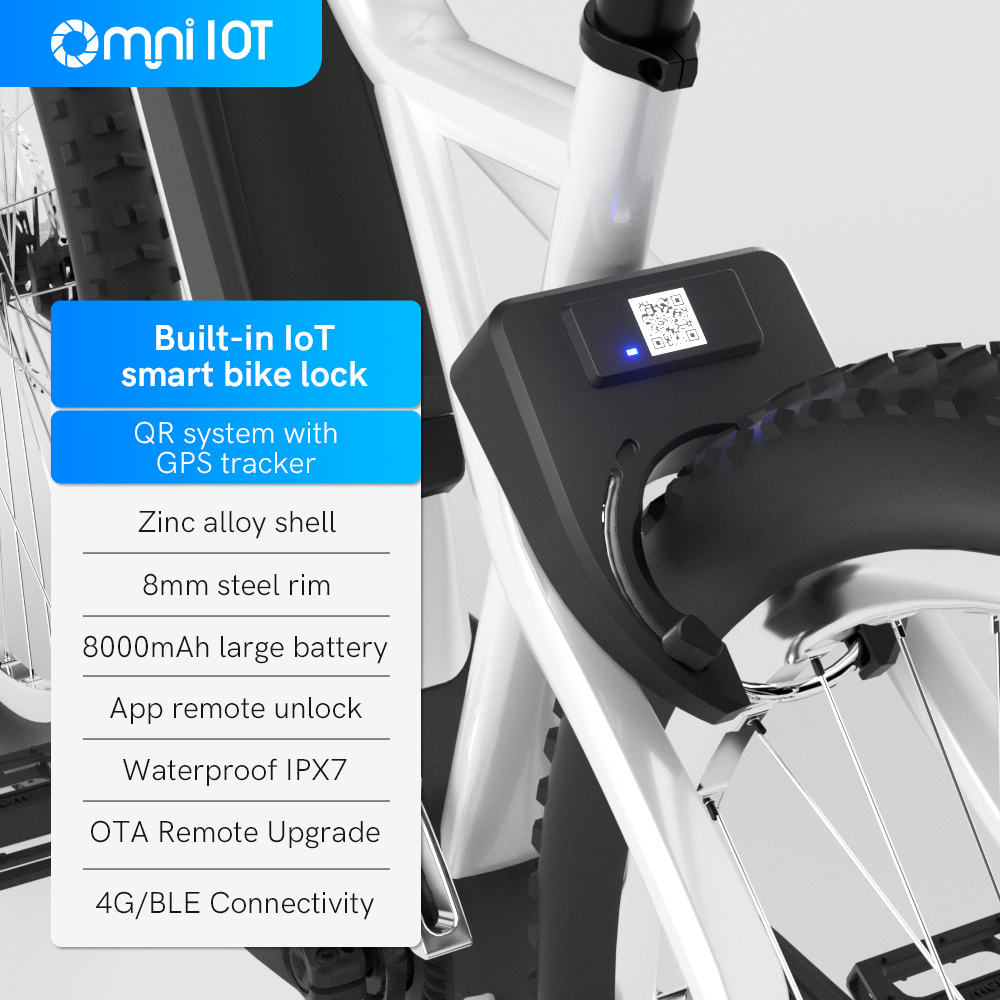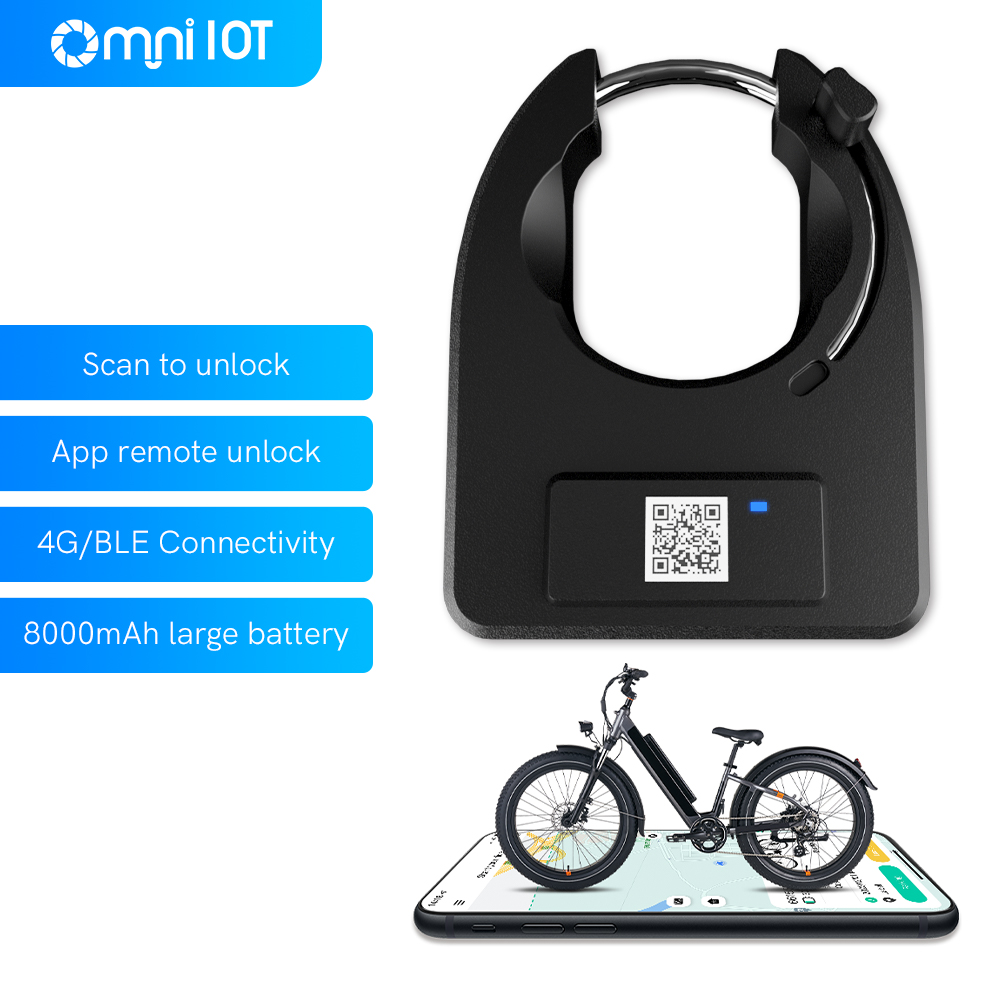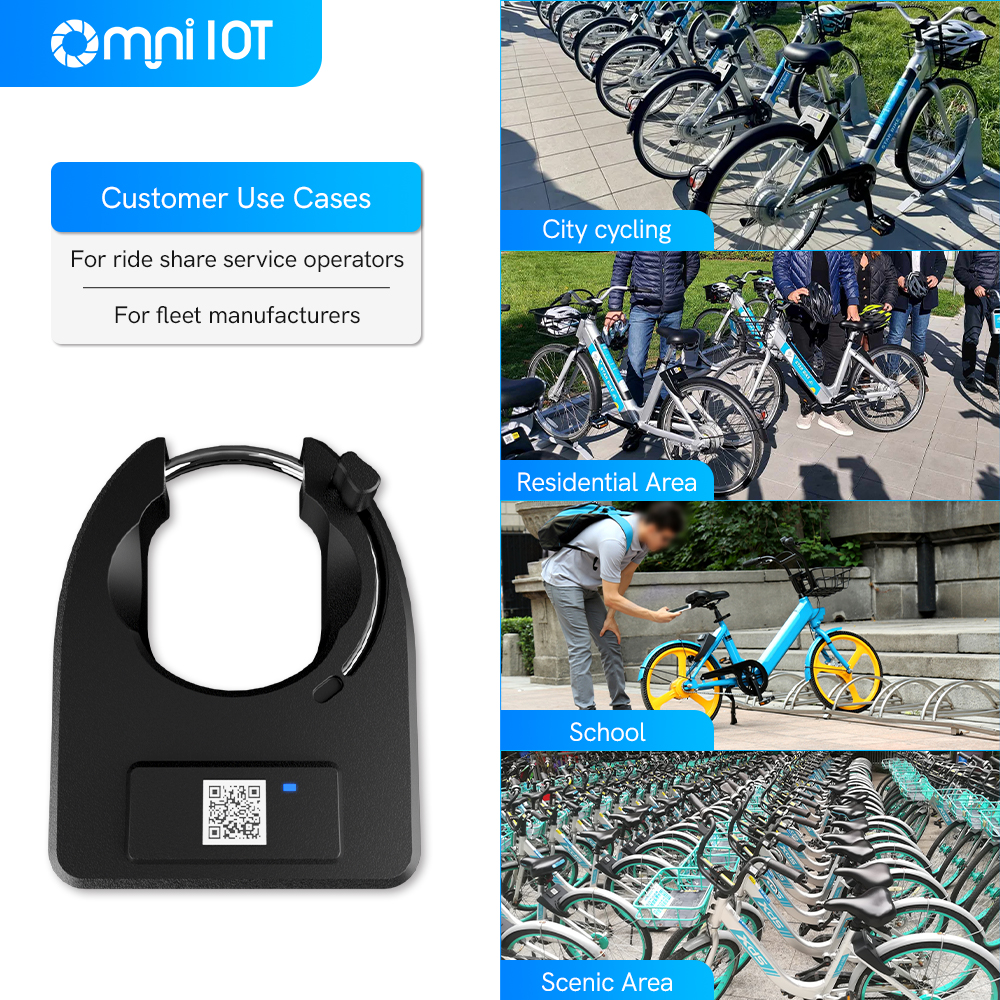Have you ever wondered about the communication principle behind the shared bikes we ride daily? Let’s take a closer look.
The core hardware of a shared bike is the smart bike lock(IoT locks),which is primarily used to control and locate the bike.The lock
integrates an embedded chip(communication module),a GPS module,and an IoT SIM card.The smart bike lock manufacturers integrate
a SIM card with a unique number inside the lock.Through 2G,3G,or 4G networks,the smart bike lock maintains communication with the
cloud platform,sending real-time GPS data and the bike's current status(locked or in use)to the cloud.

2.QR Code Unlocking
Each bike has a unique QR code label or QR code label can be put on smart bike locks.When users open the rental bike app on
phone and scan the code,the phone connects to the bike via Bluetooth.After obtaining the QR code information,the rental bike app
sends it to the cloud-based management system.The cloud system then sends the unlock command to the bike's communication module.
Upon receiving the command,the bike's central control unit activates the mechanical lock to unlock the bike.
3.Payment System
The cloud platform's management system calculates the bike's usage time based on the lock/unlock duration and charges the
corresponding amount.It connects with the mobile payment systems to complete the payment.
4.Bluetooth Module
Shared bikes,which use a SIM card and communicate with the cloud backend,need a network provider to offer service.However,
if the bike is in a remote area with poor signal reception,the smart bike lock chip may fail to receive the unlock command from the
cloud,resulting in an unlocking failure.In this case,Bluetooth communication is used.The cloud server sends the unlock key to the phone
through the bike sharing app,and the phone transmits the key via Bluetooth to the bike's electronic lock.When the key matches,the
unlocking process is triggered.Bluetooth doesn’t rely on the network system and offers higher accuracy and faster speeds for short-range
transmission,leading to a higher unlock success rate compared to network-based unlocking.

5.GPS Positioning
In some rental bike app,real-time location is provided by the phone's GPS,which shows the phone's running track on the map.The bike
can be locked from a distance as long as the phone is at the parking point(P-point),even if the bike is at a different location.However,if the
phone is not at the parking P-point,the bike cannot be locked,regardless of its position.In urban areas with tall buildings,some GPS platforms
may have positioning accuracy issues,causing the app to wrongly believe the phone is not within the geo fence,resulting in a parking
violation and penalty.
In some rental bike app,the bike's location is used for positioning.When unlocking the bike,if the person is more than ten meters away,
the bike can still be unlocked by clicking the unlock button on the app or entering the bike's number.Similarly,when locking the bike,the app
shows that the journey is completed even when the person is far from the bike.

6.IoT Technology
In shared bikes,IoT technology mainly consists of three types:2G communication modules,Bluetooth,and NB-IoT.The advantage of
NB-IoT is its wider coverage,ability to connect more devices,and lower power consumption,making it the mainstream technology for
shared bike development.




